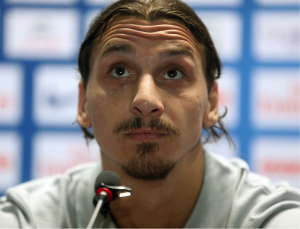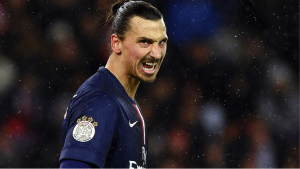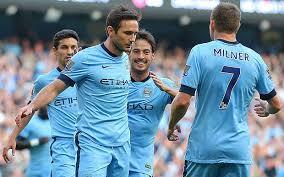Laurent Dubois's Blog, page 83
January 21, 2015
A Brief History of El Clasico
El Clasico is one of the most iconic and ferocious matchups in soccer celebrating the intense rivalry between FC Barcelona and Real Madrid two teams, which have historically dominated the La Liga. But El Clasico is more than just an intense Red Sox vs. Yankees like matchup; it’s another battle in the never-ending war of Catalonia vs. Spain. Even the garb of either team, be it the Barcelona away kits, which are almost the Catalan Flag or the Real Madrid logo (the Royal Crown) send a strong message that these teams hold significant historical and political significance.
Catalonia was its own, independent state until the early 1700s, with its own language and culture. After which it was taken over by King Philip V and, along with other regions in the Iberian Peninsula, would be mixed into what eventually became Spain. As time passed Spanish was forced upon what was Catalonia for use in legal and professional documents, and while Catalonia has, over time, tried to take measures to separate itself from Spain there were too many forces that ultimately stopped them from doing so. This is especially apparent at the end of the civil war during the rule of Spanish dictator Franco ruled over Spain when any rebellion against Spain was completely disallowed. This is also the moment that the rivalry between FC Barcelona and Real Madrid became more than just a rivalry, but a political symbol of resistance against Spain.
There are many fierce sports rivalries in the world, but none quite as politically charged as the Real Madrid vs. Barcelona rivalry. Though many fans outside of Spain support one team or another because they enjoy being a part of this great rivalry, many Spanish fans have strong cultural ties to either Barcelona or Madrid. It is truly is the best matchup in the world.
La Chute de Zlatan Ibrahimovic?
Zlatan Ibrahimovic est l’un des joueurs le plu connu de football. Il est adoré et détesté pour son énergie, sa fierté, et son arrogance. Pour son club Paris Saint-Germain, il a montré qu’il est entre les meilleurs joueurs dans le terrain de foot avec ses nombreux honneurs et trophées. En 2013, Zlatan était « sur une autre planète. » Il a été nommé meilleur joueur en Ligue 1 pour la deuxième année consécutive. Il a aussi aidé, tout seul, à son équipe nationale suédoise presque arriver à la Coupe du Monde au Brésil en 2014. Mais, après une blessure au talon, il est maintenant « simplement parmi les mœurs. »
Cette année Zlatan a eu un lent début de saison. De treize matches de championnat qu’il a joué, il n’a pas marqué ou aidé PSG à huit d’entre eux. La semaine dernière, il n’avait qu’un seul tir au but face à Bastia, l’une des pires équipes du Ligue 1. Évidemment, Zlatan n’a pas été dans sa forme. Laurent Blanc, le PSG entraîneur, dit que « il travaille dur à l’entraînement, mais il n’a pas 25 et il faut qu’il se récupère. » Zlatan ne semble pas être en pleine forme. En outre, les camarades de Zlatan n’ont pas eu leurs meilleures saisons; leur performance l’a rendu plus frustré. Selon Zlatan, il « joue bien quand il est en colère. » On peut espérer que sa colère lui permettra de revenir et jouer bien pour son équipe.
De plus, pendant la blessure de Zlatan (12 jeux), le PSG n’a pas perdu un match. Précisément, ils ont gagné contre Messi et Neymar de Barcelone: 3-2. Les joueurs de PSG ne semblaient pas manquer leur capitan pendant ces jeux.
Malgré toutes les spéculations de Zlatan Ibrahimovic, Laurent Blanc estime que « [PSG] peut s’attendre à des meilleures choses de lui dans les prochaines semaines. » Sa chute, selon les critiques et mots de Blanc, semble d’être liée à la duration de sa reprise. Pour eux, ce n’est pas la fin de la carrière pour le jouer suédois.
Après tout, il est Zlatan Ibrahimovic.
https://www.flickr.com/photos/dohastadiumplusqatar/11668845155/
How the Citizens Stole Lampard
Well, not exactly; more like “borrowing” an old but still functional squirt gun that your little brother picked up for free from a garage sale, and using that to annoy its previous owner in every way possible for an entire year. Here’s my quick pre-apology to all Manchester City fans, and to Frank Lampard for bringing up events involved around him so often in this blog.
In July 2014, it was announced that Frank Lampard signed a two-year contract to New York City F.C., having been released as a free agent from his previous club Chelsea F.C.; a few weeks later, it was further announced that he would be on loan to Manchester City F.C. until the start of the Major League Soccer (MLS) season 2015. Since then, Lampard has been a delivering man to the Citizens; 5 league goals, four of which were either equalizers or winners, including that late equalizer against his old club, Chelsea. He’s been quoted as a huge positive influence by a number of his teammates, and his presence has clearly grown on the Citizen fans.
Lampard After His Equalizer Against Chelsea
Now, with his supposed “loan-out” period close to expiration, Manchester City recently stated that they didn’t loan out Lampard at the first place; rather, they signed him for a one-year contract with an agreement to sign a two-year contract to New York City after the end of season 2014-15 of the Premier League. Further questions have been raised on the intentions behind the initial announcement, including the possible breaching of the Financial Fair Play (FFP), a regulation implemented by UEFA in order to prevent overspending amongst European football clubs. Manchester City authorities were quick in this regard, insisting that they have been fully paying Lampard’s wages from the start, and the situation does not affect the current expenditure of the club in any way.
 The Net Expenditure Cap Under FFP
The Net Expenditure Cap Under FFP
On surface, such explanation to dissociate Lampard’s situation from the issue of FFP sounds plausible, given that the club were paying all his wages anyway. But on the other hand, it does raise an issue that is a tad more problematic than just the situation itself; for it is tied to the controversial methods that Manchester City has been applying to manage their finances under the sanction of the FFP. Due to a massive spending spree in the last number of seasons, Manchester City has been under financial restrictions starting this season, including fines, salary caps, net transfer fee caps, and further limitations to players allowed to play during this season. However, the Citizens have been finding ways to fund their bloated salaries through questionable means, including the shifting of over a hundred staff members to be paid through unknown third party companies, which are likely owned by the owner of the club. This, combined with the fact that their annual reports show an unspecified “other commercial activity” revenue of over 100 million pounds as its highest revenue source, has raised questions whether the FFP truly matters for clubs like Manchester City; clubs that can route their revenues and expenditures through other football or non-football facilities outside Europe that the club owners are associated with. Lampard’s case, although apparently unproblematic on its own, is a mere spotlight to the rest of the dodgier methods the club has been using to resolve their issue with the FFP.
It is a touchy subject – the UEFA would undoubtedly be aware of this issue, but at the same time it would be difficult for them to sanction such indirect ways of expenditures from certain football clubs. As it stands, Manchester City are doing a “fair game” outside the pitch; should this be viewed in similar ways to the element of realism and injustice that football portrays inside the pitch? Or should this be viewed as highly detrimental to the game of football, enough to warrant a heavier sanction at the risk of legal conflict between the football community and the multi-billionaire club owners?
I don’t have an answer.
Images from:
http://www.financialfairplay.co.uk/fi...
January 20, 2015
The Frank Lampard Saga and its Implications for the MLS and NYCFC
On Thursday, July 24, New York City F.C, a new MLS franchise, announced that Frank Lampard was signing for the new club. On their website, they posted an article entitled, “Welcome to New York City: Frank Lampard” writing that they were “thrilled to announce the signing of England National Team and Chelsea FC legend Frank Lampard.” A historic signing, Lampard was one of the biggest names and most talented players to sign for an MLS squad since David Beckham. As you would expect with a signing this immense, the new NYCFC launched a media campaign with Lampard as their poster child, putting him on ads and billboards all over New York. This resulted in resounding support and excitement for the new squad, as they sold nearly 12,000 season tickets in less than six months, without ever playing a game.

After “signing” Lampard in July, it was announced he was “being loaned” to Manchester City until preseason started in January to maintain fitness. However, Lampard’s surprisingly good play for Manchester City resulted in Manchester City trying to extend the loan. This is where the original story begins to unravel. If NYCFC actually owned the contract, they could force Lampard to return in January. As it turned out, Lampard never actually signed a contract for NYCFC, instead making a “non-contractual ‘commitment’ to join the expansion club in January.” Lampard’s contract was actually with the City Football Group, the umbrella company owning both Manchester City and NYCFC.
If Lampard actually honored his commitment to NYCFC, none of this would have matter. However, Lampard’s good play caused Manchester City – essentially NYCFC’s parent club – to decide it needs the Englishman for the rest for the Premier League season. Since he had never signed a contract with NYCFC, Manchester City could do this without approval from New York. It was only about a week ago on January 9 that Lampard finally signed a contract with NYCFC to start July 1, 2015 – 11 months after his original farce of a contract was supposed to start.
This brings up a number of issues. First off, it delegitimizes NYCFC. If Manchester City treats NYCFC as a minor league team, NYCFC will never get the backing they need to survive in a city like New York. New Yorkers will refuse to support a team that is clearly being treated as a feeder and a mechanism to gain Manchester City fans. In the future, if a player is doing well fro NYCFC, what is to say that Manchester City doesn’t just snatch them away? Whether this is a valid concern or not, it is a question that will loom large in potential supporters heads, which could be dire for the new franchise.
Arguably more important than the success of one club, in allowing this questionable move the MLS is willingly consenting to being treated like a second-rate league. No one is arguing that the MLS is on the level of the Premier League, but if it includes teams that are being treated as unimportant by the teams that own them, it will be harder to gain legitimacy. This was seen with Chivas USA, an MLS franchise owned by Mexican club C.D. Guaralaja that folded this off-season due to poor support and embarrassingly bad ownership. After getting rid of one toxic franchise with an apathetic ownership group with ulterior motives, the league is getting worryingly close to adding another club with similar issues.
While these two worries are large enough on their own, the larger problem this debacle points to is the lack of transparency in the league. In order to ensure competitive balance and make sure all clubs stay viable, the MLS is a single-entity league, where the league actually owns all the players and divvies up the players based on supposed rules. However, there have been multiple recent cases where high-profile players sign with more successful teams in larger cities, seemingly against the league’s allocation rules with no explanation from the league. However, this is the first time the MLS has openly lied to the press, asserting that Lampard was signed when that was blatantly not true.
The Lampard saga highlights the league’s lack of transparency, and pigeonholes the league and NYCFC as second-rate. Don Garber, the MLS commissioner has highlighted transparency as a “big priority” in 2015. It is yet to be seen if he really means it. For Americans and MLS fans, hopefully he does. If not, MLS has bigger problems than an ownership group treating an MLS team as second-rate. In any case, the MLS is putting a hard ceiling on growth if they ignore the major concerns that this saga has brought up. Ideally, Garber will see his mistakes, and make the necessary changes; if not, there is little chance the league will ever be taken seriously.
La Copa Asiática, la Religión, y la Política en el Medio Oriente
La Copa Asiática se está jugando ahora en Australia. Los equipos de Corea, Uzbekistán, China, Australia, Irán, Iraq, Japón, y los Emiratos Árabes Unidos ahora están compitiendo en los octavos de final en el torneo. Había fútbol muy impresionante – no ha habida un empate en los veinte partidos del torneo, un récord para un torneo de fútbol.
Pero el torneo no está sin controversia. Hubo dos ocasiones cuando la autoridad en una país no permitió unos actividades que estaba conectado con el fútbol. El primer ejemplo fue en Iraq. El grupo de terrorismo ISIS no permita las ciudadanos de mirar al fútbol porque no obedece los layes de sharia. Por eso, durante el partido de Iraq y Jordania, la policía de ISIS mató trece adolescentes. Ellos estaban mirando el partido en la tele. Los autoridades no le gustaban este actividad porque estaban considerado malo por el religión islámico. La ejecución fue muy público. El pelotón de fusilamiento utilizó las ametralladoras. Las familias de los adolescentes no podían recuperar los cuerpos de sus seres queridos porque tenían miedo de ISIS.
En Irán, la controversia era menos violenta. Las autoridades estaban preocupados por el número de aficionados quien está mujeres. En Irán, las mujeres no pueden ir a partidos de fútbol porque está considerado malo por la moralidad. Por eso, la Federación Iraní de Fútbol dijo que los jugadores no podrían tomar los fotos con las aficionadas mujeres. El gobierno estaba preocupado porque los fotos de los jugadores y las mujeres podrían ser herramientas políticas.
Es muy interesante que el fútbol y el religión islámico estén en conflicto en los dos países. Era un poco triste que un torneo exitoso tuviera unas controversias violentas y opresivas. Pero esto es muy común durante torneos grandes. Los conflictos en Iraq y Irán sirven como un recordatorio de que el fútbol, el religión, y la política siempre están conectados.
La Copa Asiática, el Religión, y la Política en el Medio Oriente
La Copa Asiática se está jugando ahora en Australia. Los equipos de Corea, Uzbekistán, China, Australia, Irán, Iraq, Japón, y los Emiratos Árabes Unidos ahora están compitiendo en los octavos de final en el torneo. Había fútbol muy impresionante – no ha habida un empate en los veinte partidos del torneo, un récord para un torneo de fútbol.
Pero el torneo no está sin controversia. Hubo dos ocasiones cuando la autoridad en una país no permitió unos actividades que estaba conectado con el fútbol. El primer ejemplo fue en Iraq. El grupo de terrorismo ISIS no permita las ciudadanos de mirar al fútbol porque no obedece los layes de sharia. Por eso, durante el partido de Iraq y Jordania, la policía de ISIS mató trece adolescentes. Ellos estaban mirando el partido en la tele. Los autoridades no le gustaban este actividad porque estaban considerado malo por el religión islámico. La ejecución fue muy público. El pelotón de fusilamiento utilizó las ametralladoras. Las familias de los adolescentes no podían recuperar los cuerpos de sus seres queridos porque tenían miedo de ISIS.
En Irán, la controversia era menos violenta. Las autoridades estaban preocupados por el número de aficionados quien está mujeres. En Irán, las mujeres no pueden ir a partidos de fútbol porque está considerado malo por la moralidad. Por eso, la Federación Iraní de Fútbol dijo que los jugadores no podrían tomar los fotos con las aficionadas mujeres. El gobierno estaba preocupado porque los fotos de los jugadores y las mujeres podrían ser herramientas políticas.
Es muy interesante que el fútbol y el religión islámico estén en conflicto en los dos países. Era un poco triste que un torneo exitoso tuviera unas controversias violentas y opresivas. Pero esto es muy común durante torneos grandes. Los conflictos en Iraq y Irán sirven como un recordatorio de que el fútbol, el religión, y la política siempre están conectados.
January 19, 2015
La Comisión de Seguridad, Respeto y Tolerancia
El 19 de enero, la Real Federación Española de Fútbol (RFEF) constituyó una nueva comisión dentro de la organización: La Comisión de Seguridad, Respeto y Tolerancia. La Comisión tiene el propósito de promover el respeto y la tolerancia en el fútbol y prevenir la violencia, el racismo y la xenofobia. El presidente de la Comisión es Vicente Temprado. En conjunto, los miembros de la Comisión representan todos niveles de fútbol español – el profesional así como el amateur. Los representantes incluyen los presidentes de la Real Federación de Fútbol de Madrid, las Federaciones Autonómicas de Asturias y Castilla y León, la Liga Nacional de Fútbol Profesional, el Valencia CF SAD, la Asociación de Futbolistas Españoles, el Comité Nacional de Entrenadores y el Comité Técnico de Árbitros.
La creación de esta Comisión sigue las recientes modificaciones del Reglamento General y del Código Disciplinario de la RFEF, las cuales fueron aprobados el 13 de enero. Estos cambios tienen el mismo objetivo de eliminar el racismo, la xenofobia, la violencia y la intolerancia en el fútbol.
Estos problemas sociales no son restringidos a España. Ocurren en campos y estadios por todas partes del mundo. La RFEF ha implementado cambios estructurales para enfrentarse a estos temas, y con esperanza, la nueva Comisión tendrá éxito en implementar políticas efectivas.
European Football vs. American Sports: Some Interesting Differences
Though the popularity of sports like baseball, basketball, and American football in the US mirrors that of soccer in European countries, some very stark differences have been recognized between the two sporting cultures that each region fosters. Below are a few observations surrounding these inequalities.
1. Promotion and Relegation
Most European football leagues, most notably the English Premier League and La Liga (first division league in Spain), employ a promotion and relegation system to decide who competes in a particular league from year to year. In the Premier League, for example, the three teams that compile the least amount of points at the end of the season are relegated to the Football League Championship, a second tier league. The three most successful teams in that league are simultaneously promoted to the Premier League and compete in the relegated teams’ places the following season.
Could one imagine if this type of structure were used in American sports? Think about the NBA and NFL in particular where “tanking” has become a part of the fabric of these leagues over the past couple years. Some NFL teams in 2011 who started their seasons on the losing side of most games seemingly decided that they should “suck for Luck” in an effort to get the first overall selection in the upcoming year’s draft. Andrew Luck, a QB coming out of Stanford that year, was a highly regarded prospect, and teams believed that “earning” a poor record would be worth the opportunity to draft him (the Indianapolis Colts “won” the Luck sweepstakes, and their gamble has certainly paid off).
What if teams were in danger of losing their spot in the NFL if their record was too bad? If the bottom feeders of each division were to be relegated to a lesser league, would tanking ever be feasible? Imagine how intriguing a late season NFL game could be if two of the worst teams in a division were facing off under this structure. These games, unlike ones where teams are vying for a playoff birth, are centered around a team’s life in the NFL. A loss for either team could figuratively kill them, at least for a season.
2. Salary Caps/Exchanging Players
Perhaps the most notable difference between European soccer leagues and the major sports in the United States, save Major League Baseball, is the existence of salary caps in America. These limit the amount of money any one team can spend on player personnel without a hefty monetary penalty. Players are therefore restricted from getting the opportunity to earn their true value in a completely free market.
No salary caps have been imposed in the major European soccer leagues. In Europe, players are transferred freely between clubs without restriction. Although the transfer process is similar to trading players here in America, there are some key differences:
The contract of the player that is being transferred is terminated with his former club so that he may negotiate a new one with his new club.
A transfer fee, rather than another player (like in America), is paid to the club that is transferring the player.
Players can be transferred between leagues. For instance, Gareth Bale, a Welsh winger who currently competes with Real Madrid in La Liga (Spain), was transferred from Tottenham Hotspur (English Premier League) in 2013 for a record €100 million (The Telegraph).
Players can be loaned to opposing clubs in a similar fashion to transferring. Players remain under contract with the team who is loaning them, but the receivers pay a fee to the loaners as compensation. Loans can last for a few games up to multiple seasons.
3. Crowning Champions
All American major sports champions are crowned through some type of playoff system. One recent notable exception was the NCAA Division 1-A football championship, which saw a combination of human and computer rankings decide what two teams would compete in the national championship up until this past year. This system, known as the BCS, has been replaced with the 4-team College Football Playoff. In the professional ranks, at least eight teams, and often times more, are pitted against each other in order to determine each league’s champion for that particular season.
The concept of a playoff tournament are nonexistent in European club soccer. Champions are crowned solely for their performance in the regular season. In the English Premier League or La Liga, for instance, the champion is the team who has the most points (3 for win, 1 for draw, 0 for loss) after the last game of the season. Although this eliminates the possibility of a “Cinderella story,” a popular concept in America that describes a team that had a seemingly miraculous and unprecedented rise to glory, a “true” champion is crowned every year. The champion crowned in a European soccer league has proven itself to be worthy of a title throughout the entire 9-10 month season (see 1998-1999 Manchester United FC or 2008-2009 FC Barcelona). In American leagues, a team that gets “hot” at the right time (see 2011-2012 Los Angeles Kings or 1984-1985 Villanova Men’s Basketball) can come away as league champions even though they might not have been the best team for a majority of the season.
4. Power of Officials
Although officials in the major American sports have considerable control over the games they are overseeing, there is a system of checks and balances to protect against power-hungry officials and to ensure that the right call is made more often than the wrong one. The home plate umpire at a baseball game can defer to either the first or third base umpire if he is unsure whether the batter swung at a pitch, and instant replay is essential to NFL and NBA games to assist the officials in determining, for instance, whether a wide receiver’s feet were in bounds when he made a catch or if the ball left the shooting guard’s hand before the shot clock expired.
In soccer, the referee is essentially unchecked and has almost no access to instant replay. Assistant referees may make recommendations to the head one when a possible breach in the rules has occurred out of his or her view, but the head referee always has the final say on calls. Up until the 2014 World Cup, referees had no access to technology to assist in their decision making. “Goal-line technology,” which can help to determine whether a shot was a goal or not, was introduced in Brazil but is only used in a limited number of situations.
¿Como se fija la moda en el deporte?
Esta es la pregunta planteada por la autora Monica Parga en un articulo escrito para la sección de deportes de la publicación española “El País”. Ella utiliza la reciente decisión de exfutbolista Zinedine Zidane para convertirse en la imagen de Mango (una marca europea de ropa popular) con el fin de explorar la relación entre el deporte y la moda.
Me parece fascinante la sugerencia que, para los jugadores de futbol, la moda y sus vestimentos dentro y fuera del campo son parte de su trabajo como atletas profesionales. En concreto, la autora explica que para jugadores de elite como Zidane, “el futbol y la moda tienen mucho en común” porque hoy en día, “la moda esta siendo dirigida por lo que sucede en el mundo del deporte”. Los futbolistas a menudo actúan como embajadores de marcas populares para promover artículos de ropa que son influenciados por los que son mas funcionales en un partido de futbol. Esta dinámica ilustra la manera en que los atletas median relaciones entre diferentes componentes de la cultura popular.
Ella presenta esta idea en el contexto de la aumentación notable del sector de moda deportiva, y el hecho que los artículos de ropa deportiva se han convertido en parte del “armario moderno” en la ultima década. En mi opinión, su análisis de la influencia de Zidane y otros jugadores refleja una tema que hemos discutido como clase –es decir, la posición que tienen los futbolistas Europas como símbolos culturales con la capacidad de establecer tendencias y promover las ideas (tanto en la moda como en la política) a la escala nacional e internacional. El hecho de que parte de su influencia esta tan manifestada en el mundo de la moda demuestra el verdadero alcance de su autoridad como iconos culturales. También confirma nuestra sensación como un clase que los futbolistas profesionales probablamente sientan una responsabilidad de contribuir a la cultura y el dialogo nacional fuera del campo.
http://elpais.com/elpais/2015/01/19/estilo/1421672086_795508.html
Le Vélodrome : un stade de légende
Situé dans le 8e arrondissement de la ville de Marseille le long du Boulevard Michelet, le stade Vélodrome a connu de nombreux changements. Imaginé en 1930 puis inauguré en 1937, il est construit comme une enceinte sportive polyvalente pouvant accueillir des courses cyclistes (d’où son nom), des matchs de rugby et de football, ainsi que d’autres disciplines. Tout juste champions de France pour la première fois de son histoire, l’Olympique de Marseille joue son premier match (de gala) à guichets fermés contre l’un des plus grands clubs italiens de l’époque; l’équipe du Torino, et l’emporte 2-1.
Comptant initialement 35 000 places, il passe à 55 000 place en 1971 avant de revenir à 42 000 places après l’Euro 1984 à cause de la construction de loges et de boxes. A la fin des années 1990, il est agrandi pour accueillir 60 000 spectateurs lors de la Coupe du Monde de 1998. Comprenant aujourd’hui 67 394 places, il est le deuxième plus grand stade en France, et n’est devancé que par le Stade de France à Paris (à ne pas confondre avec le Parc des Princes, stade de l’équipe de football du PSG) en termes de capacité d’accueil.
Voici une rétrospective du stade de ses débuts à la maquette annoncée en 2011 comprenant un toît (sur la musique de l’entrée des joueurs) :
Vous pouvez aussi consulter ce site pour en lire plus au sujet de l’histoire du stade et de son évolution jusqu’en 1998.
Sa modification la plus récente qui a valu 267 millions d’euros d’investissement est donc l’ajout d’un toît en forme de vague qui lui donne une allure particulièrement esthétique, protège les spectateurs de la pluie et du vent et surtout, permet de conserver l’ambiance unique lors des matchs grâce à son acoustique qui empêche aux chants de s’envoler.
Cette modification de structure lui permettant d’entrer dans la catégorie 5 étoiles du classement de l’UEFA et d’être comparé à l’Allianz Arena du Bayern de Munich a cependant gommé la spécificité à ciel ouvert du stade Vélodrome, et est parfois regrettée par certains supporters. Cette nostalgie et les inconvénients du toît sont analysés par Jonathan Bartoli dans cet article.
Jugez vous-mêmes grâce à cette vidéo d’inauguration :
Laurent Dubois's Blog
- Laurent Dubois's profile
- 44 followers








